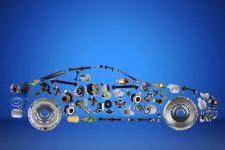Diesel Particulate Filter Guide

Most diesel cars come with a diesel particulate filter. It's important to maintain the filter and make sure it is cleaned regularly. Here's how.
A diesel particulate filter is essentially a filter that captures soot and keeps it in the exhaust system to prevent it from being released into the air.
DPF's need to be cleaned and maintained regularly, a process called regeneration.
This is done by exposing the soot to very high temperatures, burning them and turning the particulates into ash.
There are two forms of regeneration used by diesel cars: Passive and Active.
Passive regeneration occurs when the car is driven at high speeds on the motorway.
This allows the exhaust temperature to rise and burn off excess soot captured in the filter.
We highly advise that you drive your diesel vehicle between 30-50 minutes on the motorway to clear the filter
Active regeneration occurs when the cars engine management system (ECU) detects the car has reached a predetermined limit (normally about 45%).
The ECU system will then begin a post combustion process of fuel injection to raise the temperature enough to trigger regeneration.
During the regeneration process you may notice some differences with your vehicle such as automatic stop/start no longer works, engine sound is different, an increase in fuel consumption, the engine idle speed is faster, the cooling fans are running, there is an acrid smell from the exhaust.
These changes in your vehicle will all return to normal once the regeneration process is complete, which can take up to 10 minutes.
Drive at 40mph or more for at least 10 minutes
This may be enough to complete regeneration and your warning light may turn off
You should never ever remove your diesel particulate filter – doing so will result in you automatically failing an MOT test.
Removing a diesel particulate filter will also invalidate any insurance cover because it makes the vehicle illegal for road use. The cost of reinstalling a filter could be in excess of £1000.





